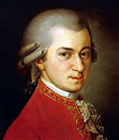

![]()
| ITINERARY |
| HOTELS |
| FLIGHT INFORMATION |
| INFO CENTER |
|
CONCERT VENUES
|
| MUSIC PROGRAM |
|
Concert Venues
|
|||
|
|||
|
St.Catherine's Church was founded by Kasimirus III The Great before 1363 for the Augustinian order. The original plans were changed for unknown reasons, and the church is almost 13 m shorter than originally planned, also the facade has never been completed nor the two towers erected. St. Catherine's church has not very fortunate history, the flood of 1534 caused great devastation to the building, as well as the fire of 1556 when the ceiling collapsed. The church was damaged twice, in 1443 and in 1786 by earthquakes. As a reason of that in 1796 the Austrian authorities ordered the church to be closed down. The Augustinians retrieved the church eighteen years later but the town authorities decided to demolish it, because of appaling physical condition. Fortunately, this never happened, and the church restoration was conducted from middle XIX century to World War I. Now it's one of the best examples of Gothic architecture in Poland.
|
|||
|
|||
|
This church is one of the best examples of high baroque north of the Alps. However, K. I. Dienzenhofer's 1711 design didn't have the massive dome that now dominates the Lesser Town skyline below Prague Castle. Dienzenhofer's son, Krystof, added the 78m (260-ft.) high dome during additional work completed in 1752. Smog has played havoc with the exterior, yet the gilded interior is stunning. Gold-capped marble-veneered columns frame altars packed with statuary and frescoes. A giant statue of the church's namesake looks down from the high altar.W. A. Mozart played the organ here during his stay in Prague.
|
|||
|
|||
|
Cathedral of St. Nicholas
|
|||
 |
May 30, Vienna Karlskirche (St.Charles's Church) |
||
|
The building of Karlskirche (St.Charles's Church) was started in
1715 following plans of one of the most famous Austrian Baroque
architects, Johann Fischer von Erlach. The church is spectacular.
It is the biggest cathedral in Baroque style north of the Alps. An unusually wide front is composed of a number of contrasting
elements which surprisingly add up to a unique and harmonic overall
image. Two colums with an allegoric representation of the life of
saint Borromeo are reminiscent of Italian Renaissance Trajan colum.
They frame the main portal which resembles a Greek temple. The oval
nave of the church is topped by an eye-catching dome (72 m high)
spectacularly painted at the inside. The church is situated at one of Vienna's central nodes, spacious 'Karlsplatz'. The area in front of Karlskirche was redesigned in the 1970s by one of the most important sculptors of the 20th century: Henry Moore. His artwork 'Hill Arches' adornes an oval water basin which reflects the church building.
|
|||



